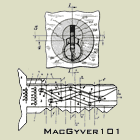I'd ordered a Mersey Lock from eBay a couple of weeks ago, and it arrived last night. It came pretty heavily corroded and banged up, but after several hours of cleaning and repair it cleaned up not too badly.
These locks were used until at least 1997 (and may still be in service?) by the Ministry of Defense in the UK, to secure "classified materials" file cabinets, safes and storerooms. This particular one was installed onto a secure file cabinet -- and, from the shape of things, I'm guessing that the cabinet fell over while the key was inserted in the lock.
The lock contains 14 levers, divided into two equal stacks, and uses a unique V-shaped key that is non-symmetric. The back of the lock is stamped with its NATO designation and serial number. (The bottom of the key ends up just above the word "CODE" in the "NATO CODE" stamping: you can clearly see a dent from where the key was forced quite heavily into the lock at some point.)
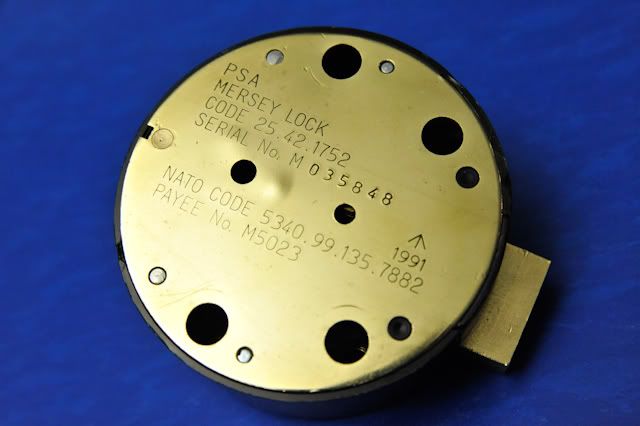
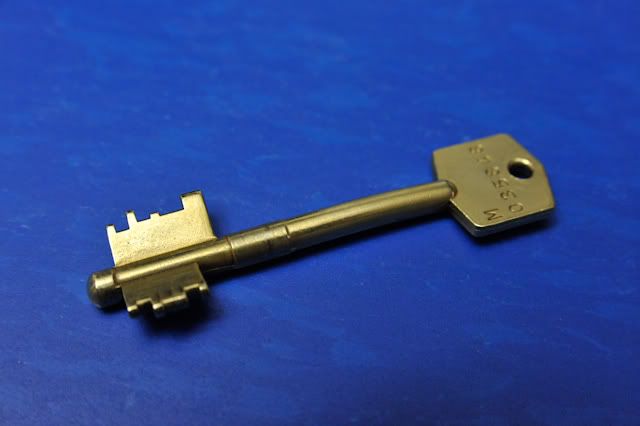
The front of the lock is normally covered by a black plastic shroud, which protrudes through the front of the container when the lock is installed, and acts as a key guide:
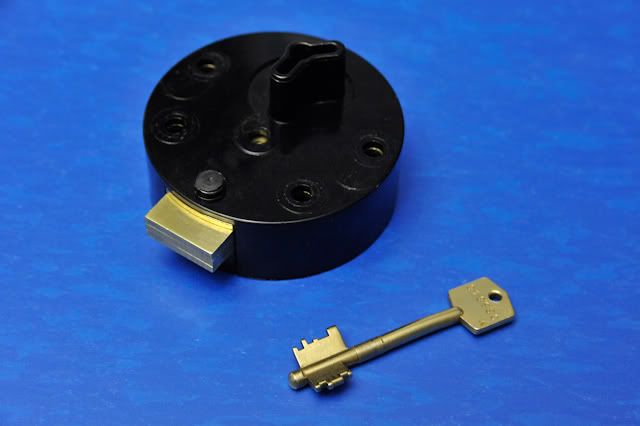
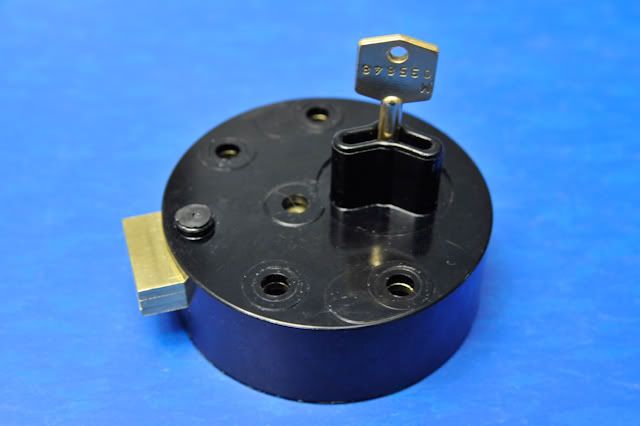
The screws that hold the lock together are located under the plastic shroud. As an anti-tamper measure, the shroud is held in place by a notch on the main locking bolt -- so that the plastic cover can only be removed when the lock is open. (The lock is key-retaining, to prevent it from being inadvertently left in an open state.) The following two photos show the lock with the plastic cover removed:
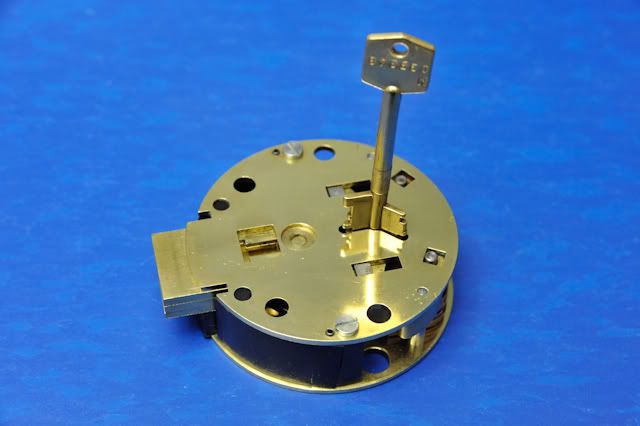
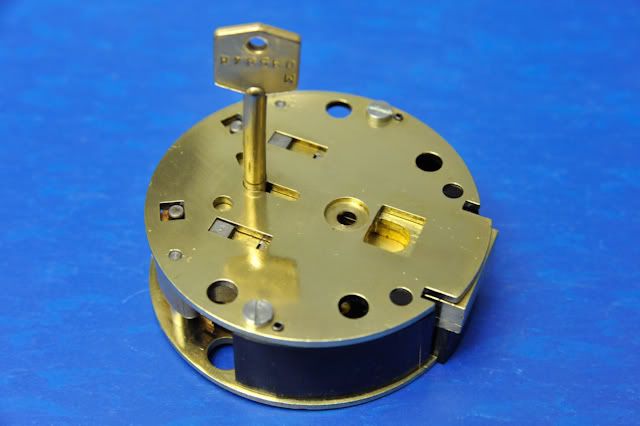
The bottom plate contains a partial curtain, acting as both a key guide and an anti-picking measure. The small strip to the right of the curtain is a spring that helps prevent the curtain from moving when there isn't a key inserted.
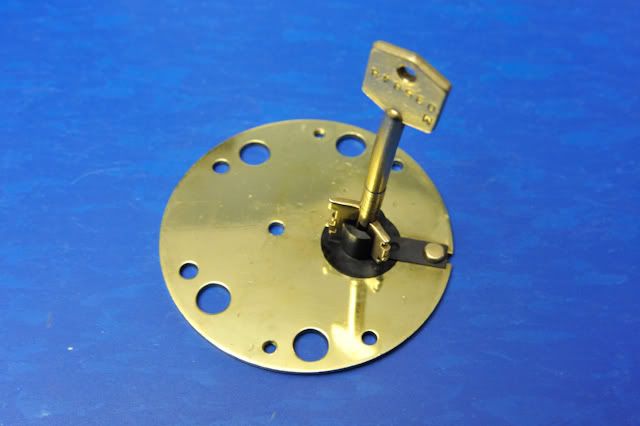
Inside the lock (this view is from the back of the lock, with the rear plate removed) are the fourteen levers. Clearly visible are the two steel stumps on the bolt; each stump is notched and will trap any levers that aren't in the correct position when bolt is tensioned. Barely visible on the right and left side of the bolt (roughly in line with the top of the levers) are two small, black strips of spring steel. These springs help to ensure that the bolt springs back to a fully closed position, which serves two purposes: (i) it ensures that the levers are released and properly reset when the key is removed; and, (ii) it activates the deadlock mechanism that prevents pressure on the bolt from pressing onto the levers once the key is removed. (It's hard to see with the levers installed, but the dead-locking latches are on both sides of the bolt -- they engage once the bolt is fully locked, to capture the bolt and stop it from moving, and release as soon as any key presses against the levers.)
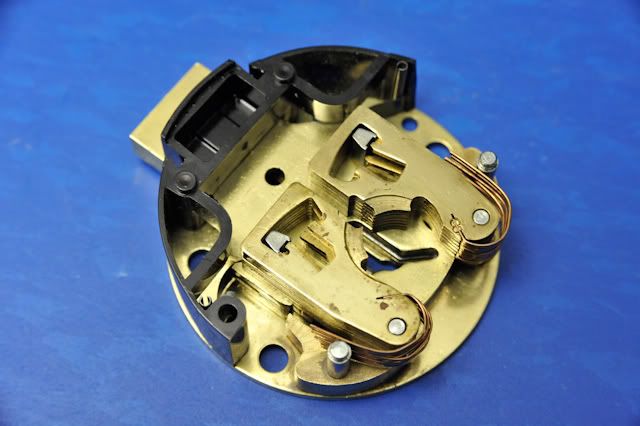
This final image shows the lever packs properly aligned with the key. The dead-locking latches are visible, just below the copper-coloured lever springs:
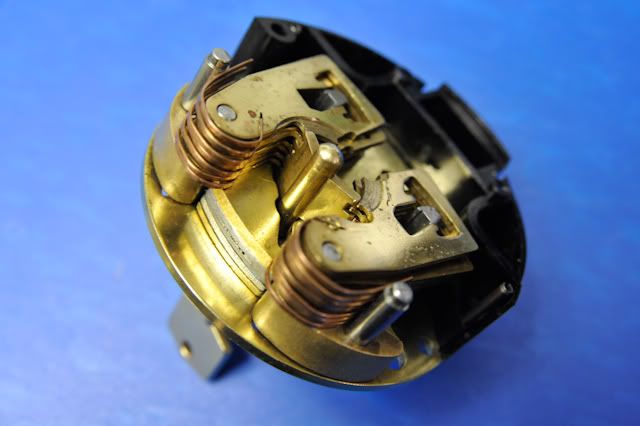
As an aside to anyone else who might be tempted to strip one of these down: do not remove the leaf springs from the sides of the locking bolt... they are an unbelievable pain to crimp back into place.




